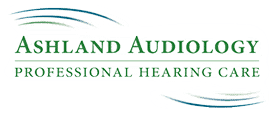Blocked earwax, medically known as cerumen impaction, is a common and often bothersome issue that many individuals face. Earwax serves a protective function, keeping the eardrum safe from dirt and dust. However, it can sometimes accumulate and lead to discomfort, hearing issues, or even earaches.
Understanding how to safely remove blocked earwax is crucial for maintaining ear health and preventing potential complications. In this comprehensive guide, we’ll explore the causes of blocked earwax, the symptoms, and, most importantly, safe methods for cleaning your ears.
Earwax is a natural substance produced by the glands in the ear canal. It plays a vital role in protecting the ears by trapping dust, debris, and other particles, preventing them from reaching the eardrum. However, in some instances, earwax can become impacted, causing a blockage in the ear canal. This can happen for several reasons.
Causes of Blocked Earwax
Here are just some of the causes of blocked earwax:
- Overproduction: Some individuals naturally produce more earwax than others.
- Narrow or Curved Ear Canals: Anatomical variations can make it easier for earwax to become trapped.
- Use of Cotton Swabs: Inserting cotton swabs or Q-tips into the ear canal can push earwax deeper and contribute to blockages.
- Hearing Aid Use: Devices like hearing aids can prevent earwax from drying out and working its way up out of the ear canal.
- Age: As people age, earwax can become drier and more prone to blockages.
Recognizing Symptoms of Blocked Earwax
Identifying the symptoms of blocked earwax can help you recognize when you might need to take action. Common signs include:
- Hearing Loss: A gradual reduction in hearing capacity.
- Earache: Discomfort or pain in the ear.
- Tinnitus: Ringing or buzzing sounds in the ear.
- Dizziness: In some cases, a blocked ear can cause dizziness.
- Itching: Sensation of itchiness in the ear canal.
- Ear infection: Sometimes an ear infection can be a sign of excess earwax in the ear canal.
Safe Methods for Earwax Removal
If you have excessive earwax in the ear canal, what can you do? Here are some ways to safely remove earwax:
- Warm Water Rinse: Use a rubber-bulb syringe filled with body-temperature water. Tilt your head and gently squirt water into the ear, allowing it to drain out. Be very gentle to avoid damaging the ear drum.
- Over-the-Counter Drops: Drops can help soften the earwax, making it easier to remove. Applying a few drops into the ear canal can soften the earwax, facilitating its natural expulsion.
- Over-the-counter earwax removal kits: OTC earwax removal kits often contain drops and a bulb syringe for irrigation. Follow the instructions carefully to avoid injury.
You don’t have to try to remove earwax at home. In fact, it is safer to visit a hearing health specialist for professional support. Using specialized equipment we can safely remove impacted earwax.
Precautions and Considerations
If you have a buildup of earwax in the ear canal, here are some things to keep in mind:
- Avoid Inserting Objects: Do not insert objects, such as cotton swabs or hairpins, into the ear canal, as this can push earwax deeper or cause injury.
- Do Not Use Excessive Force: When irrigating the ear with water or drops, use gentle pressure to avoid injury or damage to the eardrum.
- Consult a Professional for Severe Cases: If symptoms persist or are severe, seeking professional help is crucial to prevent complications.
When to Seek Medical Attention
While at-home methods may be effective for some individuals, many situations warrant professional intervention. Don’t hesitate to consult a healthcare professional if:
- Symptoms persist despite at-home attempts.
- You have a history of ear problems or ear surgery.
- You experience sudden or severe ear pain, drainage, or bleeding.
If you’re not sure how to remove earwax from your ear canal, don’t try at-home methods. Visit us for more support.
Safe Earwax Removal
Safely removing blocked earwax is essential for maintaining ear health and preventing potential complications. However, it’s important to exercise caution, and in cases of persistent symptoms or severe blockages, seek professional medical assistance. Always prioritize ear health and consult with healthcare professionals for personalized guidance tailored to your specific situation. Contact us today to learn more or to schedule an appointment.

